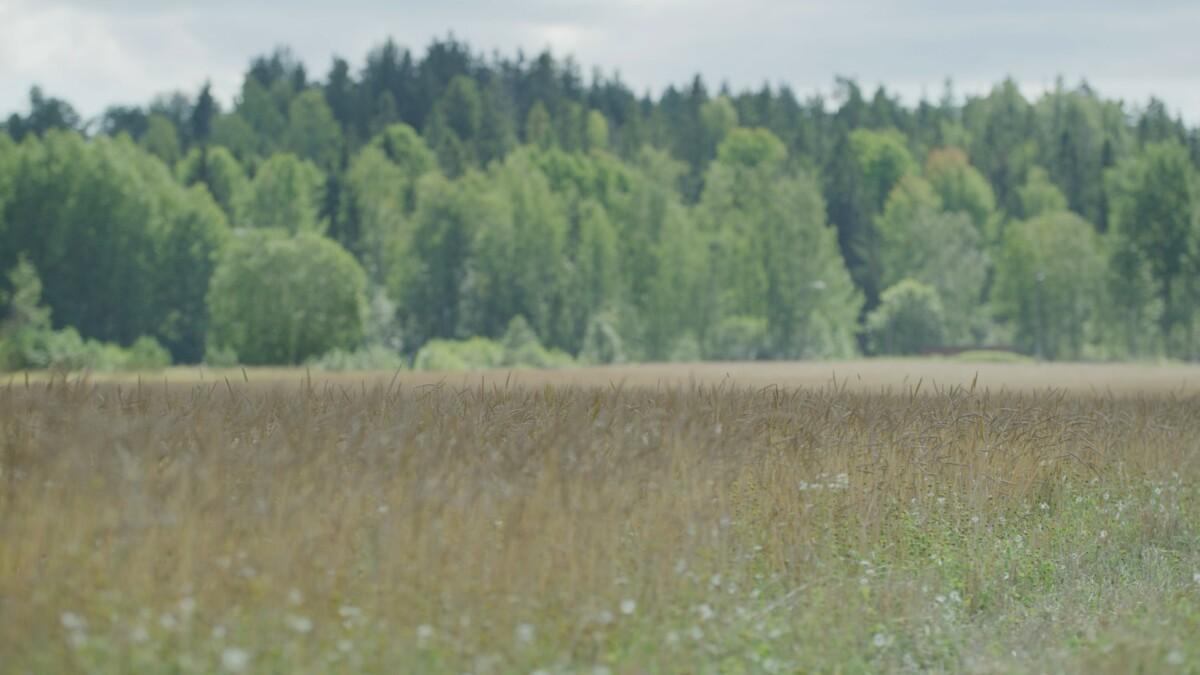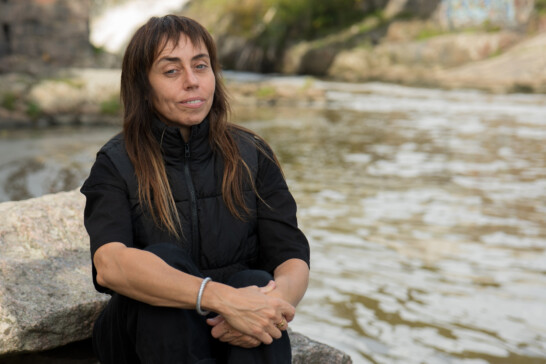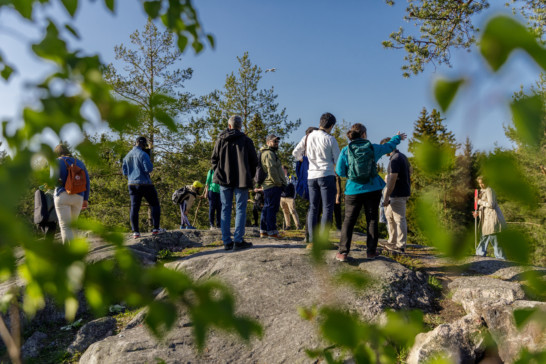News
Climate foodie, eco-eater, climavore

What to eat in environmental-crisis Finland?
IHME Helsinki Commission 2024 is the Maaleipä Challenge, planned together with London-based Cooking Sections and experts from various disciplines. The nationwide Maaleipä Challenge will be launched in April, and is part of Cooking Sections’ CLIMAVORE project started in 2015 by artists Alon Schwabe and Daniel Fernández Pascual.
CLIMAVORE seeks answers to the question: How are we to eat as humans change the climate? In the environmental crisis, human activity has blurred the boundaries between the seasons and the rhythms of annual rainfall. Pollution of the oceans, soil degradation and fertiliser run-off into water bodies are having an increasing impact on what we can eat, now and in the future.
Rather than setting strict limits on what we can and cannot eat, the project calls for us to adapt our diets to take account of and address local environmental problems. For example, by choosing products that avoid agricultural emissions, water pollution, and the spread of invasive species. At the same time, it addresses the intensive food-production practices that have led to overuse of natural resources and changes in the environment.
Climavore in Finnish
But how does climavore translate into Finnish? And how can you be a climavore in Finland?
Henri Satokangas, Senior Language Specialist at the Institute for the Languages of Finland, replies that there are many options for saying these new words in Finnish.
“A direct translation – ilmastosyöjä (ilmasto: climate, syöjä: eater) – is closely related to climavore, and would be consistent with other words ending in –syöjä, such as sekasyöjä (mixed eater, omnivore) or kasvissyöjä (vegetable eater, vegetarian). Ilmastoruokailija (climate diner) might perhaps be softer in tone.”
Satokangas also suggests klimavori (climavore), ekosyöjä or ekoruokailija (eko: eco) as possible translations. Ultimately, it is up to language users to decide which word becomes established.
“In ilmastosyöjä or ilmastoruokailija, the parts of the word are quite transparent and are also linked to the current set of climate-related words, thus anchoring the topic immediately in the climate-change perspective,”
he adds.
At IHME Helsinki, we are leaning towards ilmastoruokailija. What does being a climavore mean in practice for people living in Finland?
In Finland, a climavore should consider the environmental impact of food production and the kind of products they can choose to support more environmentally sustainable production. This may sound complicated, but at its simplest it means following the new Nordic Nutrition Recommendations.
Nordic Nutrition Recommendations and the Environment
The Nordic Nutrition Recommendations say that for both health and environmental reasons, our diet should include wholegrain cereals, vegetables, fruit, berries, pulses, nuts, seeds, responsibly farmed and caught fish, and potatoes. For similar reasons, we should cut down on red meat and meat products, sweets and chocolate, foods high in fat, salt or sugar, and poultry.
The experts we interviewed for the Maaleipä Challenge – Kari Koppelmäki, Postdoctoral researcher at the Ruralia Institute, and Minna Kaljonen, Research Professor at the Finnish Environment Institute – point out that, currently, 70-80% of arable land in Finland is used for animal-feed production instead of for a wide range of human food crops. Although poultry has often been seen as a more environmentally friendly alternative to beef and pork, it is precisely because of its high feed consumption that its use is now recommended to be reduced.
A shift to a plant-based diet would allow large-scale organic farming, which would contribute to biodiversity. Vegetables, such as easily storable root vegetables and cabbages, are recommended. It is also recommended to reduce consumption of sweets, for example, because of their tropical-oil content.
The recommendations see a completely plant-based diet as too nutritionally limited, and supplementing it with sustainably farmed or caught fish is recommended. Seppo Knuuttila, a limnologist and researcher at the Finnish Environment Institute, also elaborates on the nutrient-footprint aspect in a twitter discussion:
“A vegan diet is very good for the environment. However, if we look at the eutrophying nutrient footprint [in the Baltic Sea], replacing meat with fish in a sustainable way produces an even smaller nutrient load.”
In Finland, this means using a wide variety of wild fish for human nutrition. Last autumn at Storm Warning’s FoodSalon, Minna Kaljonen said that Finns are currently not reaching the recommended levels of fish consumption, and most of the herring goes for animal feed. At the same event Kaljonen presented the results of the JustFood project, which clearly showed that the climate impact of food goes hand in hand with its nutritional impact.
Bread for the soil and stomach
Healthy eating and climate-friendly eating are mutually reinforcing. You can go a long way towards being a climavore by following these recommendations and paying attention to where and how the products you choose are produced and what they do for the environment. In so doing, you can contribute to the revolutionary shift towards a fairer, more sustainable food system through your own choices.
In the Maaleipä Challenge, we are making climate-friendly eating a reality by encouraging everyone to develop bread recipes using nutrient-rich grains and other ingredients that are kind to the soil and the stomach. At the same time, we are supporting local operators who produce these grains and raw materials. For example, we recommend using traditional and heritage grains (e.g. rye, spelt, ergot, monocereals, oats, barley), vegetable proteins, seeds, nuts, wild plants, and wild herbs in bread. More detailed instructions and the rules of the Challenge will be published on the maaleipa.fi website, to be launched in April.

